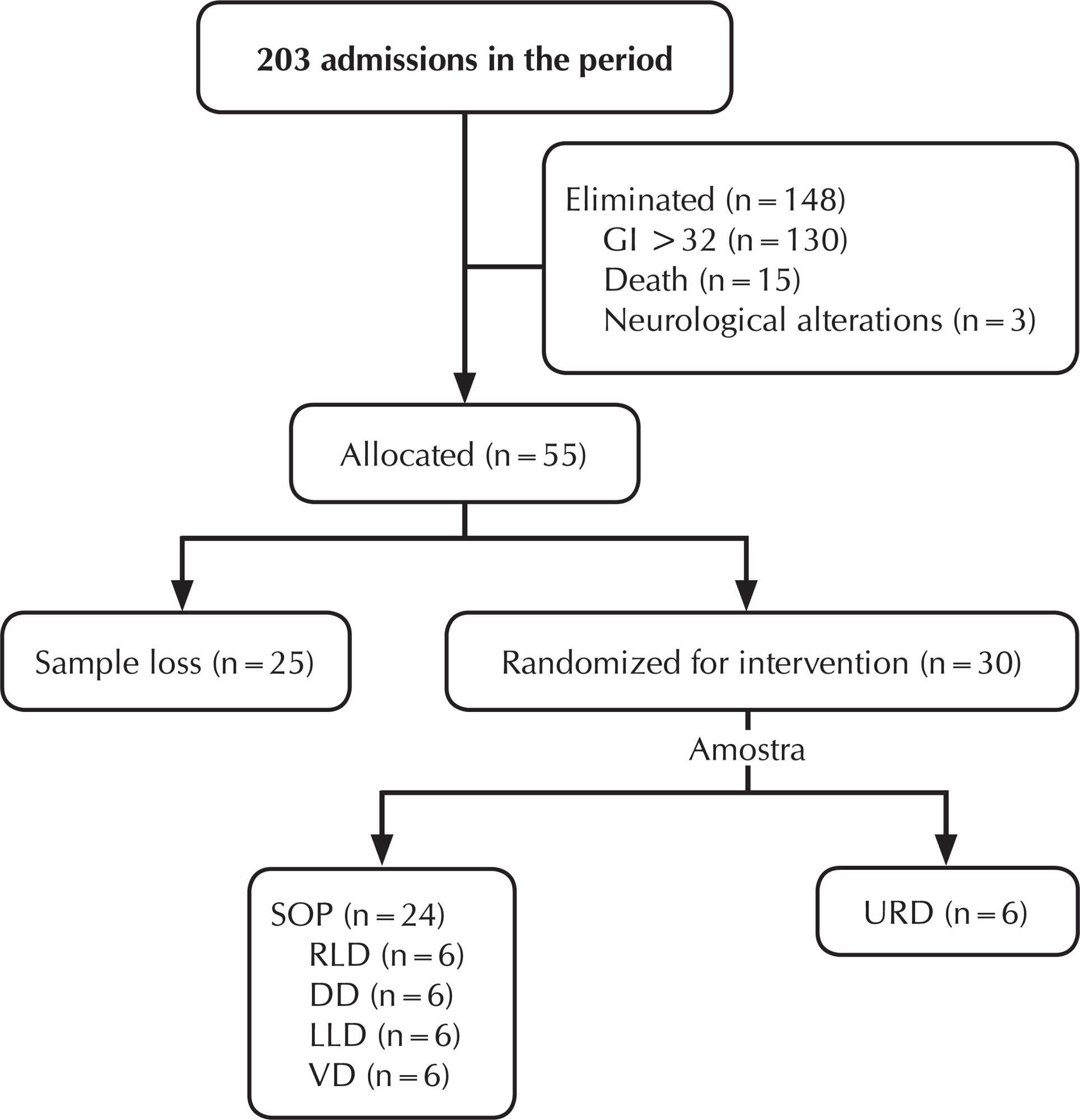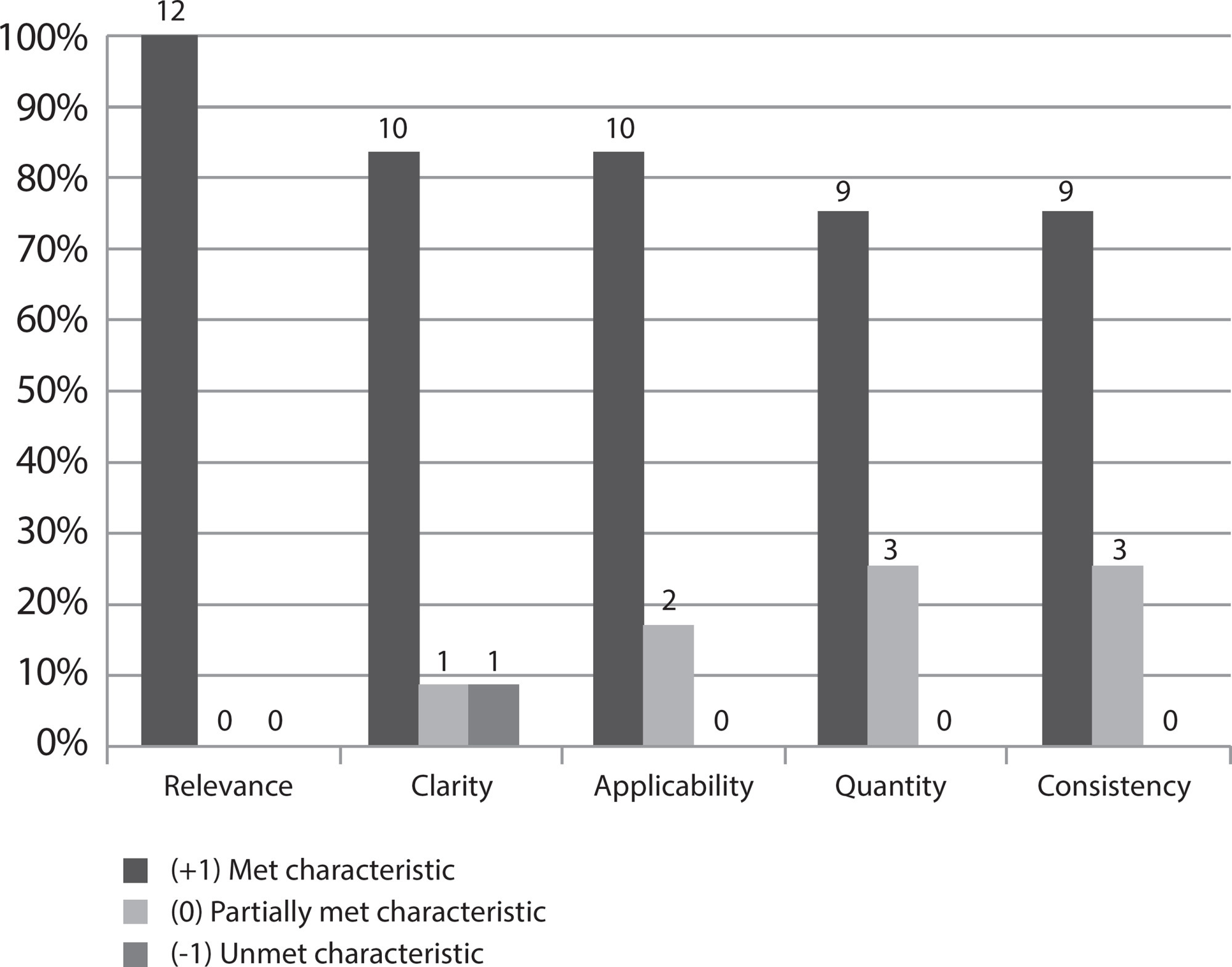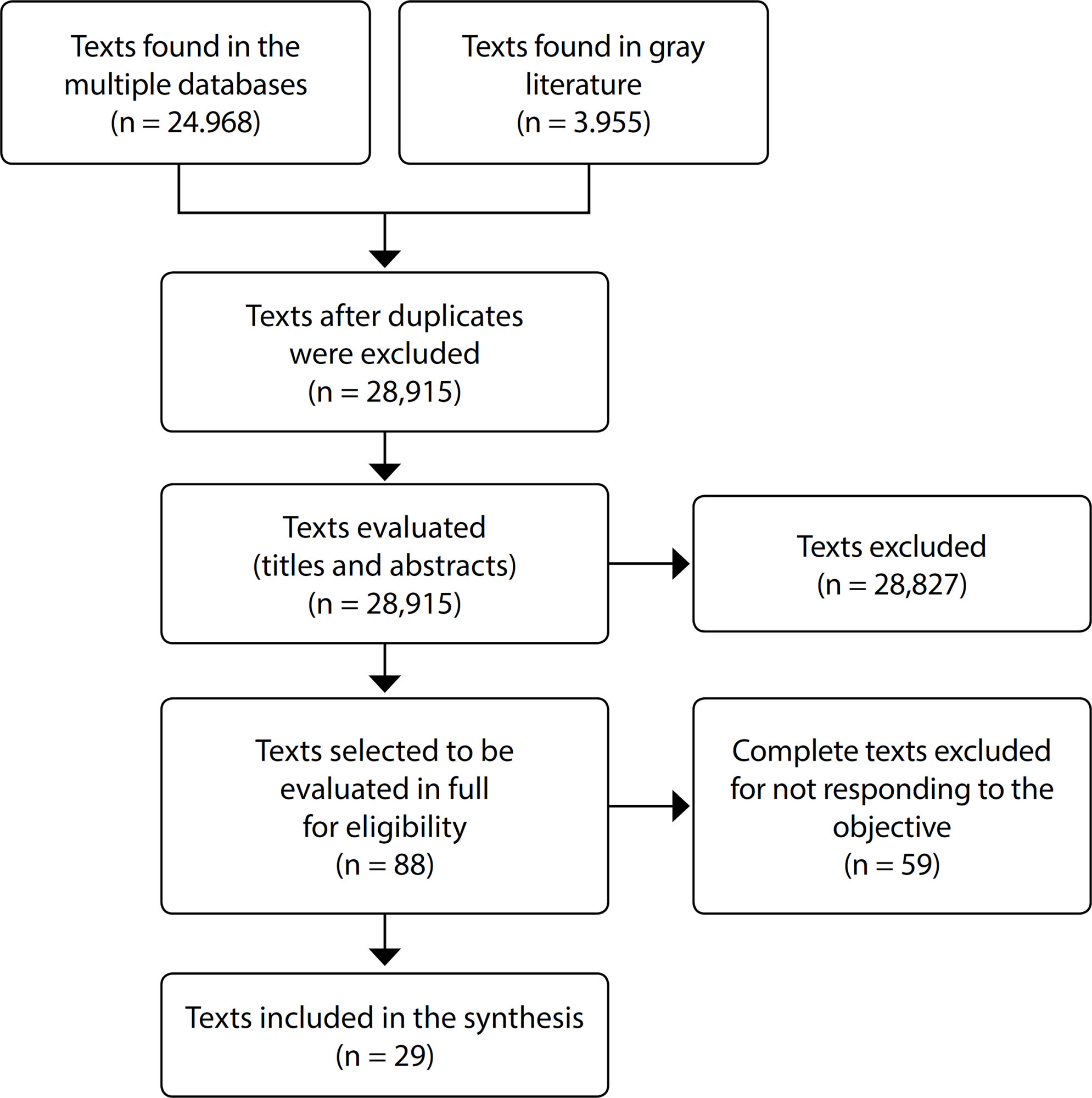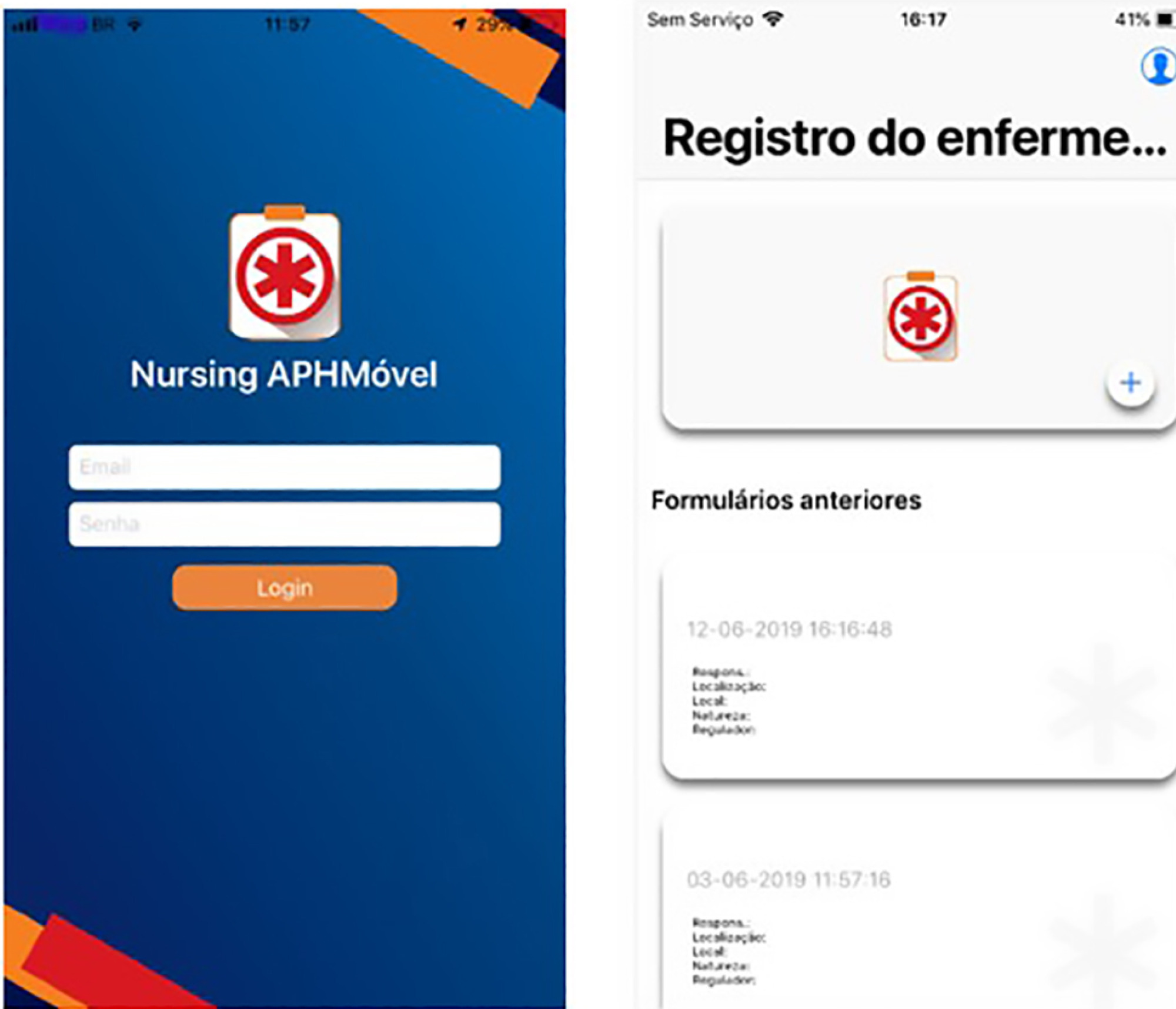-
RESEARCH01-01-2018
Being born at home is natural: care rituals for home birth
Revista Brasileira de Enfermagem. 2018;71:1247-1256
Abstract
RESEARCHBeing born at home is natural: care rituals for home birth
Revista Brasileira de Enfermagem. 2018;71:1247-1256
DOI 10.1590/0034-7167-2017-0541
Views0See moreABSTRACT
Objective:
To be aware of the care rituals developed by families when preparing for home birth during the gestational process.
Method:
Qualitative and ethnographic research developed with families during the gestational process. We adopted the observation-participation-reflection model, and the analysis was performed according to ethnonursing.
Results:
Care rituals are related to the choice of home as a place for childbirth, being characterized as a family’s rite of separation to experience this process. Other care rituals involved the preparation of the family and the eldest child as well as the home, the body, and the mind of the pregnant woman, and the choice of destination of the placenta.
Final considerations:
We must understand the birth process beyond the biological perspective, considering women and their family as a whole, within a cultural context with their beliefs and values.
-
RESEARCH01-01-2018
Violence against children and adolescents: profile and tendencies resulting from Law 13.010
Revista Brasileira de Enfermagem. 2018;71:1237-1246
Abstract
RESEARCHViolence against children and adolescents: profile and tendencies resulting from Law 13.010
Revista Brasileira de Enfermagem. 2018;71:1237-1246
DOI 10.1590/0034-7167-2017-0048
Views0See moreABSTRACT
Objective:
Describing the profile of reported violence against children and adolescents and draw an essay on the initial effects of Law 13.010 on report patterns.
Method:
Analytic study of reported cases on SINAN – Information System on Reportable Harms (from 2013 to 2015) of violence to individuals under 19, in 53 cities of Minas Gerais.
Results:
1,481 cases were reported, 49.2% before and 50.8% after Law 13.010 came to force (p = 0.5501). There was a 7% decrease on female reports and a 27.2% in male reports (p = 0.0055). It was noticed a change in report patterns (p = 0.0023), with a 130.7% increase to neglect/abandonment reports and a 33% decrease to sexual abuse report. Higher rates of violence from the parents happens at the 1 to 9-year-old age group (p < 0.0001).
Conclusion:
Main victims were women, individuals from 15 to 19 years, with aggression happening within the household; after Law 13.010, changes to patterns of victim and offender profiles and of kind of violence were noticed.
-
RESEARCH01-01-2018
Every birth is a story: process of choosing the route of delivery
Revista Brasileira de Enfermagem. 2018;71:1228-1236
Abstract
RESEARCHEvery birth is a story: process of choosing the route of delivery
Revista Brasileira de Enfermagem. 2018;71:1228-1236
DOI 10.1590/0034-7167-2016-0497
Views0See moreABSTRACT
Objective:
To analyze the discourses on the choice of the route of delivery from the perspective of women and health professionals in a public network.
Method:
The methodological approach is the discourse analysis. The data collection was through interviews and the treatment of the data was based on discourse analysis.
Results:
The categories were: 1- Between the preference and the decision there is no choice; 2- The complexity of the choice of the route of delivery; 3- It is necessary to legitimize the choice of the woman.
Final considerations:
From the perspective of women in labor the route of delivery is determined by the physician and women are not proactive. The nurses’ performance is timid, although their presence is fundamental for stimulating the physiological delivery and promoting the autonomy of women. It identifies the need for the physician to adopt a welcoming attitude, informing the women about the pros and cons involved in choosing the route of delivery.
-
RESEARCH01-01-2018
Family violence against gay and lesbian adolescents and young people: a qualitative study
Revista Brasileira de Enfermagem. 2018;71:1220-1227
Abstract
RESEARCHFamily violence against gay and lesbian adolescents and young people: a qualitative study
Revista Brasileira de Enfermagem. 2018;71:1220-1227
DOI 10.1590/0034-7167-2017-0307
Views0See moreABSTRACT
Objective:
To analyze the experiences of gay and lesbian adolescents and young people in the process of revealing sexual orientation to their families.
Method:
A qualitative study carried out in a city in the state of São Paulo. Twelve gay and lesbian adolescents and youngsters participated. For the data collection, the semi-structured interview was used and data analysis was performed using the method of interpretation of the senses.
Results:
The family reactions in the process of “coming out of the closet” of the participants were violent, with persecution and even expulsion from home, in addition to the repression of expressions of homoerotic experiences, which impacted on their health and quality of life.
Final considerations:
The family is an essential component of the support network, but also a space that can generate and reproduce forms of violence in the name of heteronormativity. Health services should develop care practices and care for the family and adolescent and homosexual youth victim of violence.
-
RESEARCH01-01-2018
Network to combat violence against rural women: articulation and communication of services
Revista Brasileira de Enfermagem. 2018;71:1212-1219
Abstract
RESEARCHNetwork to combat violence against rural women: articulation and communication of services
Revista Brasileira de Enfermagem. 2018;71:1212-1219
DOI 10.1590/0034-7167-2017-0044
Views0See moreABSTRACT
Objective:
to identify the constituent services of the network to combat violence against rural women in municipalities in the northwestern region of Rio Grande do Sul and to analyze the articulation and communication of services in search of the resolution of situations of violence.
Method:
descriptive-exploratory, qualitative study, carried out through semi-structured interviews with 26 professionals from intersectoral services, as well as managers and/or those responsible for these services. Data were systematized through content analysis.
Results:
although the professionals collectively discuss and plan coping actions, difficulties were identified in the approximation between services, related to the definition of flow, knowledge of actions/referrals, fear of seeing and reporting violence, understanding that it is not a question of demand of their field of action, and women’s access to services.
Final considerations:
it is evident the need to implement public policies that address the singularities of violence against women in rural settings.
-
RESEARCH01-01-2018
Clinical application of the Standard Operating Procedure of Positioning with Premature Infants
Revista Brasileira de Enfermagem. 2018;71:1205-1211
Abstract
RESEARCHClinical application of the Standard Operating Procedure of Positioning with Premature Infants
Revista Brasileira de Enfermagem. 2018;71:1205-1211
DOI 10.1590/0034-7167-2016-0674
Views0See moreABSTRACT
Objective:
To compare the physiological and behavioral responses of Premature Infant (PREEMIE) positioned by the Unit Routine Decubitus (URD) and the Standard Operating Procedure (SOP).
Method:
A quasi-experimental comparative study performed at a Neonatal Intensive Care Unit in Southern Brazil. We evaluated 30 PREEMIEs with gestational age ≤32 weeks, randomly assigned to Unit Routine Decubitus (URD) and Intervention Group (IG), subdivided into Right Lateral Decubitus (RLD), Dorsal Decubitus (DD), Left Lateral Decubitus (LLD) and Ventral Decubitus (VD). It was evaluated before, during and after the procedure: Heart Rate (HR); Respiratory Frequency (RF); Peripheral Oxygen Saturation (SpO2); behavior by the Neonatal Behavioral Assessment Scale (NBAS); by NIPS.
Results:
During the intervention, RR (p = 0.023), indexes in NBAS (p = 0.01) and NIPS (p <0.0001) reduced significantly in SOP. HR and SpO2 did not present a significant difference.
Conclusion:
Positioning according to the SOP shows benefit in relation to the behavioral and physiological status of PREEMIE.

-
01-01-2018
Contributions of nursing care to women
Revista Brasileira de Enfermagem. 2018;71:1203-1204
Abstract
Contributions of nursing care to women
Revista Brasileira de Enfermagem. 2018;71:1203-1204
DOI 10.1590/0034-7167-201871sup301
Views0The situation of women and, particularly, the problems concerning their lives deserve special care by health professionals, society and mass media, in order to change their situation and boost improvements due to the condition where women were inserted decades ago and nowadays.The pregnancy-postpartum circle may be the most dramatic and exciting experience in the life […]See more -
01-01-2018
Contribuições do cuidado em enfermagem à mulher
Revista Brasileira de Enfermagem. 2018;71:1203-1204
Abstract
Contribuições do cuidado em enfermagem à mulher
Revista Brasileira de Enfermagem. 2018;71:1203-1204
DOI 10.1590/0034-7167-201871sup301
Views0A situação da mulher e, particularmente, os problemas que dizem respeito à sua vida vêm merecendo destacada atenção por parte dos profissionais de saúde, da sociedade e dos meios de comunicação, sendo focalizada por eles a necessidade de acelerar mudanças na condição que ela ocupou por décadas e ainda hoje ocupa.O ciclo gravídico-puerperal talvez seja […]See more
-
06-28-2021
Baby-Friendly Hospital Initiative for Neonatal Wards: impact on breastfeeding practices among preterm infants
Revista Brasileira de Enfermagem. 2021;74:e20200909
Abstract
Baby-Friendly Hospital Initiative for Neonatal Wards: impact on breastfeeding practices among preterm infants
Revista Brasileira de Enfermagem. 2021;74:e20200909
DOI 10.1590/0034-7167-2020-0909
Views0See moreABSTRACT
Objective:
to assess breastfeeding support practices for preterm infants at two Baby-Friendly hospitals in southeastern Brazil, comparing the effect of implementing the guidelines for Baby-Friendly Hospital Initiative for Neonatal wards.
Methods:
a quasi-experimental study, pre- and post-intervention with control. Implementation of this initiative in the intervention hospital using Knowledge Translation. Data collection on compliance with the adapted Ten Steps, Three Guiding Principles and the Code before and after the intervention was carried out via interviews with mothers of preterm babies and professionals, unit observation and documentary analysis in the intervention and control hospitals. Intra-intergroup comparison was performed.
Results:
increases in global compliance with the Three Principles, Ten Steps, the Code, partial compliance with each Principle and in most Steps was greater in the intervention hospital. Conclusion: this initiative improved practices related to breastfeeding in the intervention hospital, demonstrating the potential to improve care and breastfeeding in neonatal wards.

-
03-15-2021
Effectiveness of mobile applications in pregnant women’s adherence to prenatal consultations: randomized clinical trial
Revista Brasileira de Enfermagem. 2021;74:e20190599
Abstract
Effectiveness of mobile applications in pregnant women’s adherence to prenatal consultations: randomized clinical trial
Revista Brasileira de Enfermagem. 2021;74:e20190599
DOI 10.1590/0034-7167-2019-0599
Views0See moreABSTRACT
Objective:
to evaluate the effectiveness of a mobile application for cell phones in the adherence of pregnant women to prenatal consultations.
Method:
a randomized controlled clinical trial, simple-blind with two parallel groups, conducted from January to December 2018. Data collection was carried out through a structured interview at the end of the third trimester of pregnancy. For analysis, Chi-Square and Mann-Whitney tests were used. The sample consisted of 88 pregnant women from 2 Family Health Strategies in Northeast Brazil. Participants were randomized into two groups: intervention (IG), who used the application, and control (CG), who attended prenatal consultations.
Results:
pregnant women who used the application (IG) attended a greater number of consultations when compared to participants in the CG, identifying a statistical difference between the groups (p<0.05).
Conclusion:
the application showed to be an effective health technology to improve adherence to prenatal care. Brazilian Registry of Clinical Trials: RBR-74SNST.

-
03-29-2021
Digital educational technology for care management of diabetes mellitus people’s feet
Revista Brasileira de Enfermagem. 2021;74:e20190725
Abstract
Digital educational technology for care management of diabetes mellitus people’s feet
Revista Brasileira de Enfermagem. 2021;74:e20190725
DOI 10.1590/0034-7167-2019-0725
Views0See moreABSTRACT
Objective:
to develop and validate a distance learning course aimed at the pillars of care management of diabetes mellitus people’s feet.
Method:
a technological production research using Moodle Virtual Learning Environment, based on Andragogy, Constructionism and Instructional Design. Content is based on consensus guidelines on diabetic foot. Validation was carried out by distance education, diabetes and/or diabetic foot experts.
Results:
the course’s content is based on diabetic foot guidelines, and is structured in units with didactic material, videos, forums and questionnaires to assess the participants’ learning. The judges considered it appropriate to meet nurses’ needs in clinical practice.
Conclusion:
the virtual learning course has been validated, being a promising strategy for training nurses on care management of diabetes mellitus people’s feet.

-
05-21-2021
Evolution of nursing teaching in the use of education technology: a scoping review
Revista Brasileira de Enfermagem. 2021;74:e20200422
Abstract
Evolution of nursing teaching in the use of education technology: a scoping review
Revista Brasileira de Enfermagem. 2021;74:e20200422
DOI 10.1590/0034-7167-2020-0422
Views1See moreABSTRACT
Objective:
To identify and map the technological tools of information and communication to support the teaching learning process in Nursing teaching courses.
Methods:
This is a scoping review whose search was carried out in seven databases and in grey literature. After an initial analysis of the selection, 88 texts were read integrally, and 29 made up the final sample.
Results:
Virtual learning environment and object, simulation, hypermedia, and software or cellphone applications were the tools the nursing professors used the most. Studies highlight that the application of technology was important in the teaching-learning process, since it encouraged teaching based on safe care, motivating and developing abilities/competences, supported on significant, effective, flexible, and autonomous learning.
Conclusion:
The contribution of the technology for nursing formation stands out, but it should be highlighted that its employment must be critical, reflective, based on pedagogical theories and developed by trained professors.

-
ORIGINAL ARTICLE05-24-2021
Construction and validation of educational material on promoting breastfeeding in schools
Revista Brasileira de Enfermagem. 2021;74:e20200511
Abstract
ORIGINAL ARTICLEConstruction and validation of educational material on promoting breastfeeding in schools
Revista Brasileira de Enfermagem. 2021;74:e20200511
DOI 10.1590/0034-7167-2020-0511
Views1See moreABSTRACT
Objective:
to build and validate an educational technology on the promotion of breastfeeding for schoolchildren.
Methods:
a methodological study was developed through a bibliographic survey, situational diagnosis, creation of illustrations, layout, design and texts, validation of the material with the help of expert judges and target audience.
Results:
the content judges enabled the validation of the material with an overall Content Validity Index of 90%, the judges of the design Suitability Assessment of Materials of 90.4% and the target audience with a 95.6% agreement. The readability percentage proved to be excellent, with an overall score of 100%.
Conclusion:
the educational technology proved to be a valid and reliable instrument to promote a breastfeeding culture among schoolchildren.

-
09-01-2021
Nursing APHMÓVEL: mobile application to register the nursing process in prehospital emergency care
Revista Brasileira de Enfermagem. 2021;74:e20201029
Abstract
Nursing APHMÓVEL: mobile application to register the nursing process in prehospital emergency care
Revista Brasileira de Enfermagem. 2021;74:e20201029
DOI 10.1590/0034-7167-2020-1029
Views1See moreABSTRACT
Objectives:
to develop an application for a mobile device for the registration of the Nursing Process by nurses of the Mobile Emergency Care Service.
Methods:
applied research with technology development based on software engineering and Apple’s Human Interface Guidelines. It had the support of an application developer and a designer. The proposal was built in four steps (scope definition, planning, prototype creation and development).
Results:
the application “Nursing APHMóvel” allows to record the steps of the Nursing Process, such as history, nursing diagnoses, outcomes and interventions with the possibility of storing the data and/or file in printable format. The technological innovation has location features, scales with automatic sum of items, touchscreen, and offline operation.
Conclusions:
it was possible to develop the application with the potential for computerized documentation of the Nursing Process by nurses working in the Mobile Emergency Care Service.

-
03-15-2021
Advanced Practice Nursing in Latin America and the Caribbean: seeking its implementation
Revista Brasileira de Enfermagem. 2021;74:e74suppl601
Abstract
Advanced Practice Nursing in Latin America and the Caribbean: seeking its implementation
Revista Brasileira de Enfermagem. 2021;74:e74suppl601
DOI 10.1590/0034-7167.202174suppl601
Views1Healthcare organizations are increasingly complex and specialized, seeking to optimize their quality and safety standards, and be able to meet the growing needs of their users. To face this reality, health professionals need to adapt to respond in time to the demands of the health context. In turn, the World Health Organization (WHO), through the […]See more -
ORIGINAL ARTICLE10-01-2022
Self-care of elderly people with diabetes mellitus and the nurse-patient interpersonal relationship
Revista Brasileira de Enfermagem. 2022;75(1):e20201257
Abstract
ORIGINAL ARTICLESelf-care of elderly people with diabetes mellitus and the nurse-patient interpersonal relationship
Revista Brasileira de Enfermagem. 2022;75(1):e20201257
DOI 10.1590/0034-7167-2020-1257
Views1INTRODUCTIONChronic non-communicable diseases are the main causes of death and health problems in the world, causing about 41 million deaths each year, which corresponds to approximately 71% of all deaths. Among these diseases, diabetes mellitus has stood out due to the increase in its incidence and prevalence().Estimates indicate that 463 million people live with diabetes […]See more
Search
Search in:
Nuvem de Tags
Adolescente (85) Atenção Primária à Saúde (239) COVID-19 (91) Criança (91) Cuidados de Enfermagem (269) Educação em Enfermagem (151) Educação em Saúde (139) Enfermagem (930) Enfermagem Pediátrica (86) Estudantes de Enfermagem (77) Estudos de Validação (131) Família (87) Idoso (208) Promoção da Saúde (99) Qualidade de Vida (104) Saúde do Trabalhador (86) Saúde Mental (145) Saúde Pública (82) Segurança do Paciente (150) Tecnologia Educacional (100)



